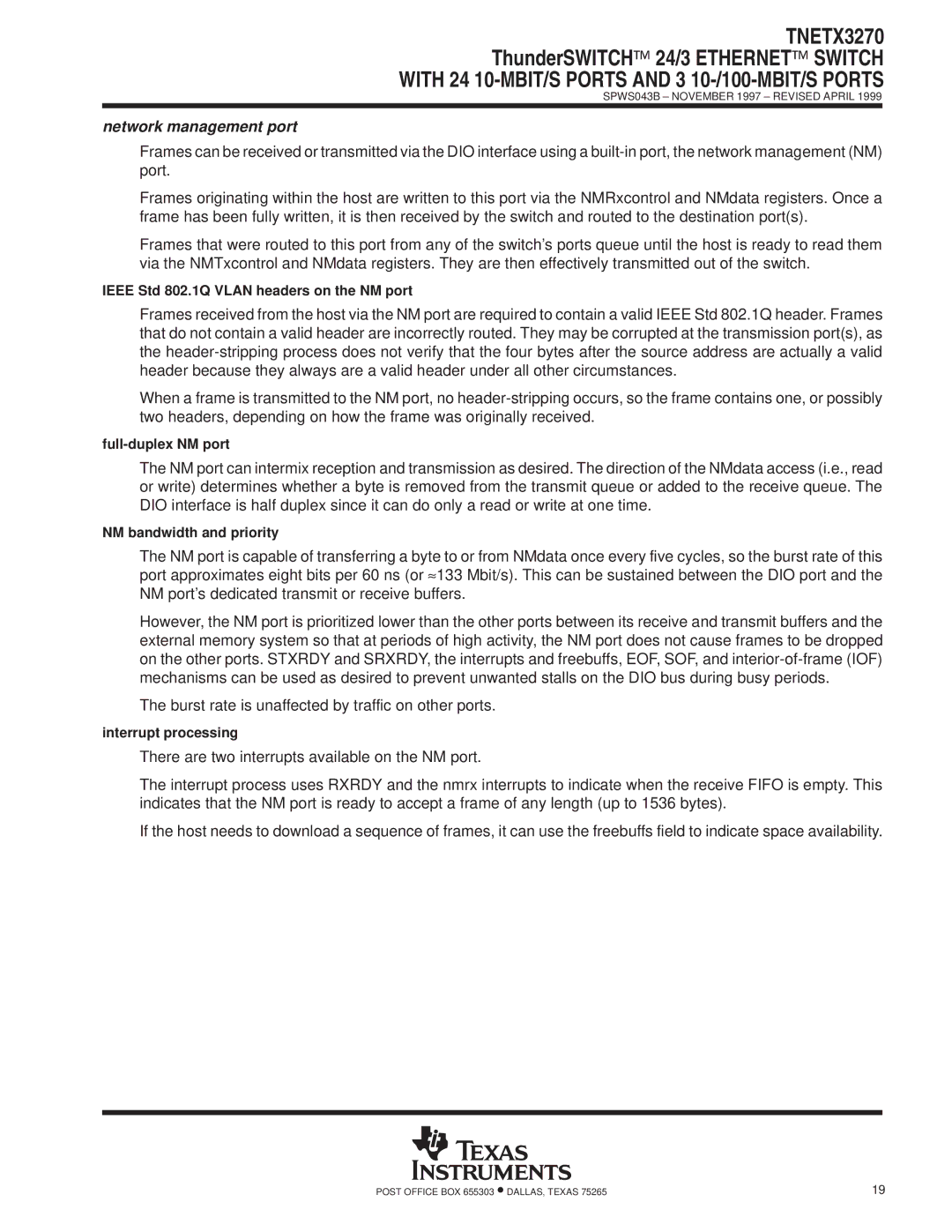
TNETX3270
ThunderSWITCH 24/3 ETHERNET SWITCH
WITH 24 10-MBIT/S PORTS AND 3 10-/100-MBIT/S PORTS
SPWS043B ± NOVEMBER 1997 ± REVISED APRIL 1999
network management port
Frames can be received or transmitted via the DIO interface using a
Frames originating within the host are written to this port via the NMRxcontrol and NMdata registers. Once a frame has been fully written, it is then received by the switch and routed to the destination port(s).
Frames that were routed to this port from any of the switch's ports queue until the host is ready to read them via the NMTxcontrol and NMdata registers. They are then effectively transmitted out of the switch.
IEEE Std 802.1Q VLAN headers on the NM port
Frames received from the host via the NM port are required to contain a valid IEEE Std 802.1Q header. Frames that do not contain a valid header are incorrectly routed. They may be corrupted at the transmission port(s), as the
When a frame is transmitted to the NM port, no
The NM port can intermix reception and transmission as desired. The direction of the NMdata access (i.e., read or write) determines whether a byte is removed from the transmit queue or added to the receive queue. The DIO interface is half duplex since it can do only a read or write at one time.
NM bandwidth and priority
The NM port is capable of transferring a byte to or from NMdata once every five cycles, so the burst rate of this port approximates eight bits per 60 ns (or ≈133 Mbit/s). This can be sustained between the DIO port and the NM port's dedicated transmit or receive buffers.
However, the NM port is prioritized lower than the other ports between its receive and transmit buffers and the external memory system so that at periods of high activity, the NM port does not cause frames to be dropped on the other ports. STXRDY and SRXRDY, the interrupts and freebuffs, EOF, SOF, and
The burst rate is unaffected by traffic on other ports.
interrupt processing
There are two interrupts available on the NM port.
The interrupt process uses RXRDY and the nmrx interrupts to indicate when the receive FIFO is empty. This indicates that the NM port is ready to accept a frame of any length (up to 1536 bytes).
If the host needs to download a sequence of frames, it can use the freebuffs field to indicate space availability.
POST OFFICE BOX 655303 •DALLAS, TEXAS 75265 | 19 |
